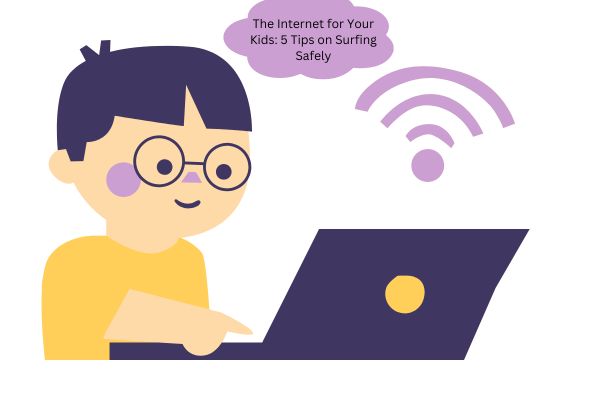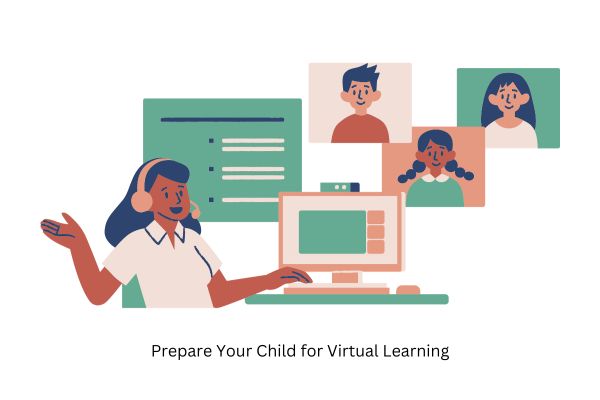The internet is an incredible resource, opening doors to a world of information, entertainment, and connection. For kids, it’s a playground filled with games, educational tools, and a chance to connect with friends. But just like any playground, the internet needs a few safety rules to ensure a fun and positive experience.
Here are 5 key tips to equip your child to navigate the online world safely and confidently:
#1. Be a Partner in Exploration

The internet is vast, and it can be overwhelming for young minds. Don’t just hand your child a device and expect them to stay safe. Instead, embark on this digital adventure together. Explore age-appropriate websites, games, and apps with them. It allows you to introduce them to safe online spaces while familiarizing yourself with the content they’re consuming.
#2. Think Before You Share
The internet is a bit like a giant bulletin board – once something’s out there, it’s almost impossible to erase. Teach your child the importance of online privacy. Explain that personal information like their address, phone number, or school name should not be shared with strangers online. This includes pictures, especially those revealing their location or identifying details.
#3. Passwords: Your Secret Fortress Key
Passwords are the keys to our accounts. Help your child create strong passwords that are a combination of uppercase and lowercase letters, numbers, and symbols. Encourage them to avoid using birthdays, names of pets, or easily guessable words. Explain the importance of keeping passwords a secret, even from friends. Consider using a password manager for the family, but make sure you understand the security implications before using one.
#4. Stranger Danger Goes Digital
The same stranger danger rules we teach our kids in the real world apply online. Explain that not everyone online is who they say they are. Discourage them from accepting friend requests or interacting with people they don’t know in real life. Discuss online predators and empower them to come to you if they ever feel uncomfortable or unsafe while interacting with someone online.
#5. Building a Safety Net with Parental Controls
While open communication is key, there are additional tools to keep your child safe online. Most devices and browsers offer parental controls. These features allow you to:
- Filter Content: Block access to inappropriate websites and content based on age and maturity level.
- Limit Screen Time: Set healthy boundaries for how much time your child spends online.
- Monitor Activity: Keep an eye on websites visited and apps used to identify any potential risks.
Bonus Tip: Open Communication

The most important safety tool is open communication. Create a safe space for your child to come to you with any questions or concerns they may have online. Let them know that they can tell you anything, even if they mess up. This builds trust and encourages them to make responsible choices online.
Here are some additional ideas to foster open communication:
- Schedule regular “internet check-ins” to discuss what they’re doing online and any challenges they might be facing.
- Explore the internet together and use it as a learning opportunity. Discuss online safety and responsible behavior casually.
- Be a good role model by practicing good online habits yourself.
Remember, the internet is a constantly evolving landscape. Stay informed about the latest trends, apps, and potential dangers. There are many resources available online and from your local library to help you stay up-to-date.





